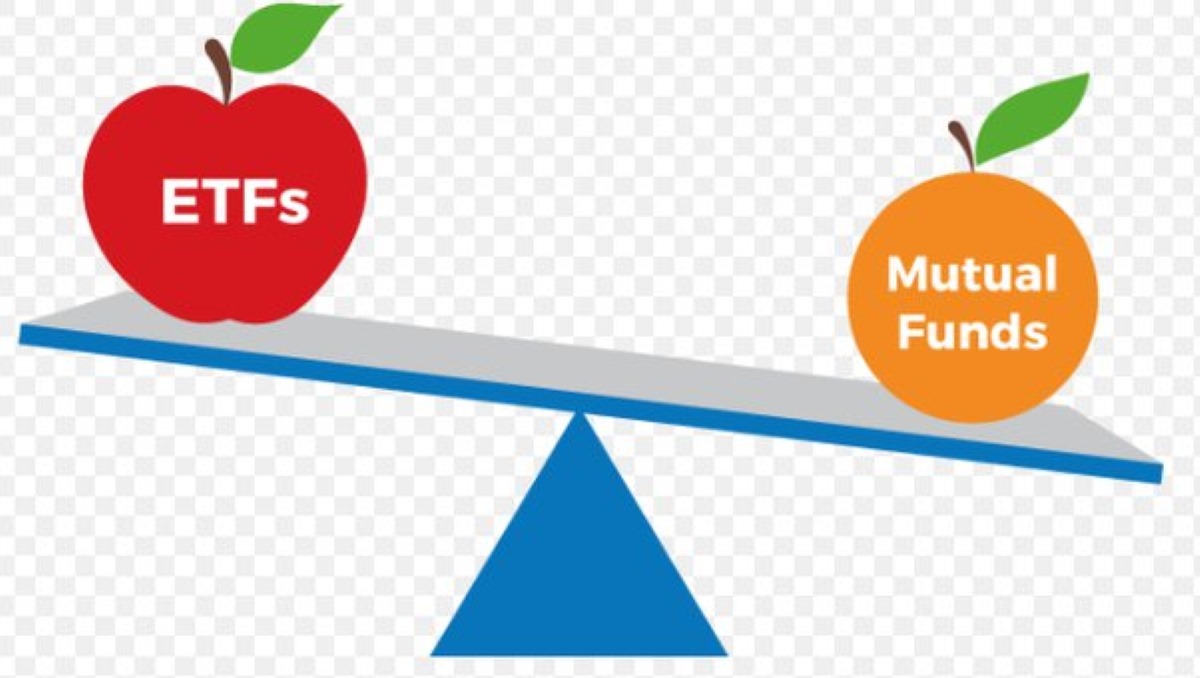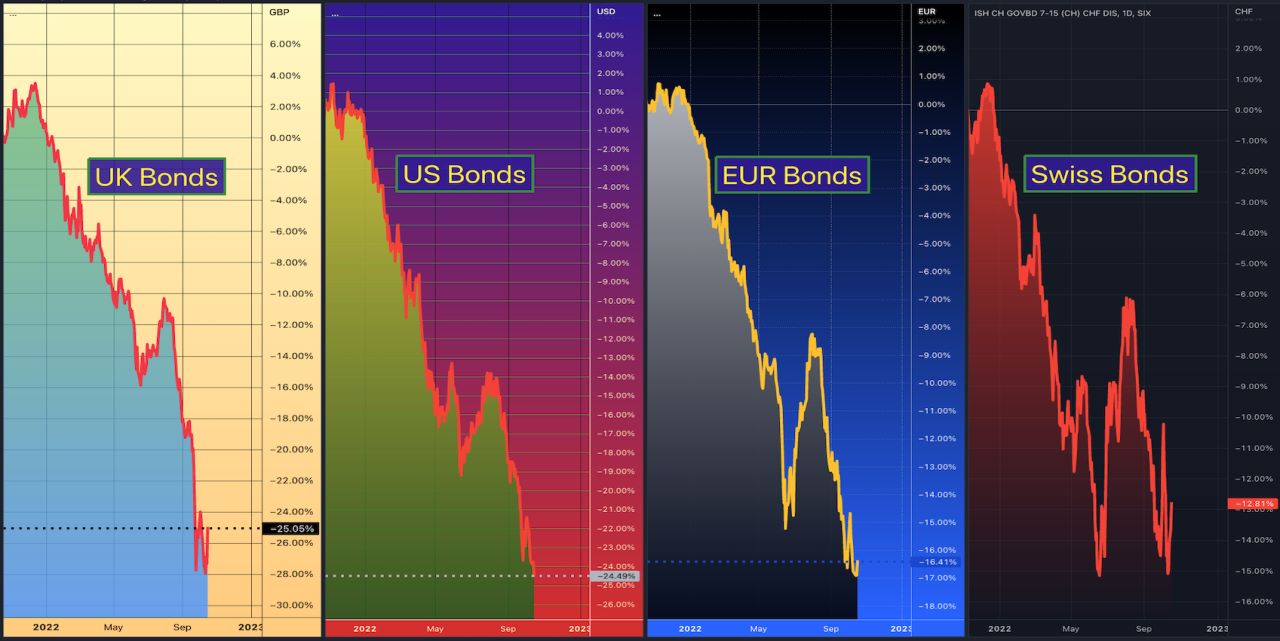

Finance
How To Access Pension Funds
Published: January 22, 2024
Learn how to access pension funds and manage your finances effectively with our expert tips and guidance. Secure your financial future today!
(Many of the links in this article redirect to a specific reviewed product. Your purchase of these products through affiliate links helps to generate commission for LiveWell, at no extra cost. Learn more)
Table of Contents
**
Introduction
**
Pension funds play a crucial role in securing financial stability during retirement. These funds are designed to provide individuals with a steady income stream after they exit the workforce. However, accessing pension funds is a significant financial decision that requires careful consideration and understanding of the associated processes and implications. In this comprehensive guide, we will delve into the intricacies of pension funds, eligibility criteria for accessing them, the various types of pension funds available, and the steps involved in accessing these funds. Additionally, we will explore the tax implications of accessing pension funds, shedding light on the potential impact on an individual's financial portfolio.
Understanding the nuances of pension funds is essential for individuals planning for their retirement and seeking to make informed decisions regarding their financial well-being. By gaining insight into the eligibility requirements and the different methods of accessing pension funds, individuals can effectively strategize their retirement income and ensure a secure financial future. Furthermore, comprehending the tax implications associated with pension fund access is pivotal for making sound financial plans and optimizing the utilization of these funds.
As we embark on this exploration of pension funds, we aim to equip readers with the knowledge and understanding necessary to navigate the complexities of pension access and make informed choices that align with their long-term financial goals. Whether you are approaching retirement or simply seeking to expand your financial literacy, this guide will provide valuable insights into the world of pension funds and empower you to make well-informed decisions regarding your financial future.
**
Understanding Pension Funds
Pension funds, also known as superannuation funds in some regions, are investment vehicles specifically designed to provide individuals with a regular income stream during their retirement years. These funds are typically accumulated over the course of an individual’s working life, with contributions made by the individual, their employer, or both. The primary objective of pension funds is to ensure that retirees have a stable source of income to support their living expenses and maintain their desired standard of living.
One of the key features of pension funds is their long-term investment horizon. Pension funds are structured to grow over time through contributions and investment returns, aiming to build a substantial corpus that can sustain retirees throughout their post-employment years. The funds are often managed by professional fund managers or trustees, who oversee the investment strategies and asset allocation to optimize growth and mitigate risk.
Pension funds commonly offer a range of investment options, including stocks, bonds, real estate, and other financial instruments. These diverse investment avenues aim to generate returns that outpace inflation and provide retirees with a reliable income source. Additionally, pension funds may offer flexibility in terms of payout options, allowing retirees to choose between receiving a lump sum, regular payments, or a combination of both.
Understanding the mechanics of pension funds is essential for individuals planning for retirement, as it enables them to make informed decisions regarding their contributions, investment choices, and eventual access to the accumulated funds. By grasping the fundamental principles of pension funds, individuals can navigate the complexities of retirement planning with confidence and foresight, ensuring that their financial well-being is safeguarded during their post-employment years.
**
Eligibility for Accessing Pension Funds
Accessing pension funds is typically contingent upon reaching the eligible retirement age, which varies based on the specific pension scheme and the prevailing regulations in the relevant jurisdiction. In many cases, individuals become eligible to access their pension funds once they reach the age of 55 or 65, although the age threshold may differ for different pension plans and regions. It is essential for individuals to familiarize themselves with the specific eligibility criteria governing their pension fund to determine the precise age at which they can commence accessing their retirement savings.
Besides the age requirement, some pension funds may impose additional criteria for accessing the accumulated funds. For instance, individuals may need to have ceased employment or reached a certain milestone, such as attaining the state pension age, to qualify for accessing their pension funds. Understanding these eligibility parameters is crucial for individuals planning their retirement, as it allows them to anticipate the timeline for accessing their pension funds and align their financial plans accordingly.
Moreover, individuals may have the option to access their pension funds earlier under specific circumstances, such as ill health or severe financial hardship. In such cases, the pension scheme’s rules and regulations outline the conditions under which early access to the funds may be permitted, providing a safety net for individuals facing unforeseen challenges that necessitate tapping into their retirement savings ahead of the standard eligibility age.
As individuals navigate the landscape of pension funds and consider their retirement options, understanding the eligibility criteria for accessing these funds is paramount. By gaining clarity on the age requirements, cessation of employment conditions, and provisions for early access, individuals can effectively plan for their retirement and make well-informed decisions regarding the utilization of their pension funds.
**
Types of Pension Funds
Pension funds encompass a diverse array of structures and categories, catering to the varying needs and preferences of individuals planning for their retirement. Understanding the different types of pension funds is instrumental in making informed decisions about retirement planning and selecting the most suitable fund that aligns with one’s financial objectives and risk tolerance.
One prevalent category of pension funds is the defined benefit plan, wherein the retirement benefits are predetermined based on factors such as an individual’s salary history and years of service. These plans offer retirees a fixed, regular income throughout their post-employment years, providing a sense of financial security and stability. Employers often sponsor defined benefit plans, assuming the responsibility of funding and managing the pension fund to fulfill the promised benefits.
Conversely, defined contribution plans constitute another prominent type of pension fund, wherein the contributions made by the individual and, in some cases, the employer, are channeled into investment vehicles such as mutual funds, stocks, and bonds. The eventual pension benefits are contingent upon the accumulated contributions and the investment performance, affording individuals greater flexibility and control over their retirement savings. Individual retirement accounts (IRAs) and 401(k) plans in the United States exemplify popular forms of defined contribution pension funds.
Furthermore, hybrid pension plans amalgamate elements of both defined benefit and defined contribution structures, offering a blend of fixed benefits and investment-based returns. These hybrid plans aim to combine the advantages of both models, providing retirees with a degree of income predictability while leveraging investment opportunities to enhance the overall pension fund growth.
Additionally, self-invested personal pensions (SIPPs) represent a form of pension fund that grants individuals autonomy in selecting and managing their investment portfolio. SIPPs empower individuals to diversify their pension assets across a spectrum of investment vehicles, including stocks, bonds, and commercial property, fostering a tailored approach to retirement planning and wealth accumulation.
Comprehending the diverse landscape of pension funds equips individuals with the knowledge necessary to evaluate their retirement options and align their financial strategies with their long-term aspirations. By discerning the characteristics and nuances of various pension fund types, individuals can make informed decisions that optimize their retirement savings and pave the way for a financially secure post-employment phase.
**
How to Access Pension Funds
Accessing pension funds is a pivotal stage in an individual’s retirement journey, marking the transition from accumulating savings to utilizing them as a regular income source. The process of accessing pension funds entails several crucial steps, each demanding careful consideration and adherence to the applicable regulations and procedures.
Upon reaching the eligible retirement age and fulfilling the stipulated criteria, individuals can initiate the process of accessing their pension funds. The first step typically involves contacting the pension provider or scheme administrator to formally request access to the accumulated funds. This communication initiates the necessary administrative procedures and documentation, setting the groundwork for the subsequent stages of accessing the pension funds.
Subsequently, individuals are presented with various options for utilizing their pension funds, each carrying distinct implications for their retirement income and financial outlook. One common approach is to annuitize a portion or the entirety of the pension funds, converting the accumulated savings into a guaranteed income stream that disburses regular payments over the individual’s retirement years. Alternatively, retirees may opt for income drawdown, allowing them to retain control over their pension funds while withdrawing funds as needed to support their living expenses.
Another avenue for accessing pension funds involves the possibility of taking a tax-free lump sum, enabling individuals to receive a portion of their retirement savings as a lump-sum payment, which can be utilized for specific financial needs or aspirations. It is imperative for individuals to weigh the potential tax implications and long-term financial ramifications of opting for a lump-sum withdrawal, ensuring that it aligns with their broader retirement strategy.
Moreover, individuals may explore the option of deferring the access to their pension funds, allowing the accumulated savings to continue growing while delaying the commencement of regular income payments. This approach can be advantageous for individuals seeking to bolster their retirement corpus and optimize their financial position over the long term.
As individuals navigate the process of accessing their pension funds, it is essential to seek professional financial advice to assess the available options, evaluate the associated risks and benefits, and make informed decisions that harmonize with their retirement goals and financial circumstances. By approaching the access to pension funds with prudence and foresight, individuals can maximize the utility of their retirement savings and lay a solid foundation for a financially secure and fulfilling post-employment phase.
**
Tax Implications of Accessing Pension Funds
Accessing pension funds triggers a series of tax implications that can significantly impact an individual’s financial position and retirement income. Understanding the tax considerations associated with pension fund access is paramount for retirees, as it empowers them to make informed decisions that optimize their tax efficiency and preserve their retirement savings.
One crucial aspect of the tax implications pertains to the method through which pension funds are accessed. When retirees choose to receive a lump-sum payment from their pension fund, a portion of this withdrawal may be subject to taxation. The tax treatment of lump-sum withdrawals varies based on the prevailing regulations and the specific circumstances of the individual, encompassing factors such as the amount withdrawn and the individual’s overall income profile.
Furthermore, the regular income payments derived from annuitizing pension funds or opting for income drawdown are typically subject to income tax. As retirees receive periodic payments from their pension funds, these funds are regarded as part of their taxable income, potentially influencing their overall tax liability. It is essential for individuals to assess the tax implications of these regular income streams and incorporate them into their broader tax planning strategies to mitigate any adverse effects on their financial well-being.
Moreover, the timing of accessing pension funds can have implications for an individual’s tax position. By strategically planning the commencement of pension fund access, retirees can optimize their tax exposure and minimize the impact on their overall tax burden. Engaging in proactive tax planning, potentially in consultation with a financial advisor or tax professional, enables individuals to leverage available tax reliefs and allowances, ensuring that their retirement income is managed in a tax-efficient manner.
Additionally, the utilization of pension funds to procure specific financial products or investments may entail distinct tax considerations. For instance, if retirees choose to allocate a portion of their pension funds to purchase an annuity or invest in certain financial instruments, the tax treatment of these transactions necessitates careful evaluation to ascertain the implications for their tax position and long-term financial plans.
By comprehensively understanding the tax implications of accessing pension funds, individuals can proactively strategize their retirement income, optimize their tax efficiency, and safeguard their financial resources. Engaging in prudent tax planning and seeking professional guidance empowers retirees to navigate the complexities of pension fund taxation, ensuring that their retirement income is maximized and their tax liabilities are managed effectively.
**
Conclusion
Navigating the realm of pension funds is a fundamental aspect of retirement planning, encompassing a multitude of considerations, from eligibility requirements to tax implications. As individuals approach their retirement years, gaining a comprehensive understanding of pension funds and the process of accessing them is paramount for making sound financial decisions and securing a stable income stream during the post-employment phase.
By delving into the intricacies of pension funds, individuals can equip themselves with the knowledge necessary to navigate the complexities of retirement planning and make informed choices regarding their financial well-being. Understanding the diverse types of pension funds, including defined benefit plans, defined contribution schemes, hybrid models, and self-invested personal pensions, empowers individuals to select the most suitable fund that aligns with their long-term financial goals and risk tolerance.
Moreover, comprehending the eligibility criteria for accessing pension funds, including the age requirements and provisions for early access under specific circumstances, enables individuals to anticipate the timeline for utilizing their retirement savings and align their financial plans accordingly. The process of accessing pension funds involves critical decisions, such as annuitization, income drawdown, and lump-sum withdrawals, each carrying distinct implications for retirement income and tax efficiency.
Furthermore, the tax implications of accessing pension funds constitute a pivotal consideration for retirees, shaping their overall tax position and influencing their financial well-being. Engaging in proactive tax planning and understanding the tax treatment of pension fund withdrawals and income streams empowers individuals to optimize their tax efficiency and preserve their retirement savings.
As individuals embark on their retirement journey, the knowledge and insights garnered from this guide will serve as a valuable resource, enabling them to navigate the complexities of pension funds with confidence and foresight. By leveraging this understanding, individuals can proactively plan for their retirement, optimize their pension fund utilization, and lay the groundwork for a financially secure and fulfilling post-employment phase.
In essence, comprehending the nuances of pension funds, eligibility criteria, access processes, and tax implications empowers individuals to make informed decisions that safeguard their financial well-being and pave the way for a rewarding retirement experience.














